As an attorney, New York labor law violations can be tricky to navigate, but these challenges are offset by unique opportunities and advantages available to the litigant, especially with regard to settlement dynamics.
Understanding how to strategically navigate your labor law dispute (and taking advantage of every opportunity available) is fundamental to maximizing your likelihood of success and the total compensation you’re able to secure. That being said, not every strategic advantage is based on legal principles — in fact, skilled labor law attorneys at a dedicated law firm are able to identify solutions and advantages that may be adjacent to the legal process.
Let’s explore some strategic issues common to New York labor law settlements. Read on to learn more!
Why are employers increasingly afraid of litigation in today’s employment dispute context?
Litigation involves a variety of risks, uncertainties, and costs that are best avoided. That being said, social norms have changed considerably over the years, and New York labor law settlements are increasingly common — and desirable — in large part due to these societal shifts.
In today’s post-MeToo social environment, the public is increasingly aware of sexual harassment, discrimination, and other employment-related violations. There is substantially less tolerance for violators — and in fact, mere accusations are enough to ruin individual’s and business’s reputations in the public eye. This heightened awareness extends to violations of human rights laws, such as the New York State Human Rights Law and the New York City Human Rights Law, which protect against discrimination based on race, disability, and religious beliefs.
This makes the publicity of a New York labor law dispute particularly undesirable for the employer-defendant — and it increases the pressure they face in the event of a lawsuit. If an employee files a discrimination lawsuit, for example, the “cost” of the negative publicity could be catastrophic for their business. As such, you can use that knowledge to force them into an early and favorable settlement agreement.
How can you leverage your case strengths to pressure the employer-defendant into an early and favorable settlement?
There are two major non-legal elements of litigation that employer-defendants want to avoid:
- Negative publicity of a labor law violation
- Financial resources necessary to litigate the dispute
Effectively pressuring the employer-defendant into an early and favorable New York labor law settlement should therefore focus on heightening the risk for the defendant in these aspects.
Maximizing media publicity for the litigation phase
The threat of media reporting is not made real unless — and until — members of the media are made aware of the dispute and its relevance to readers. Though litigation is public, it is not a guarantee that the media will understand just how volatile and interesting the core labor law problem in a particular dispute is.
Skilled labor lawyers can package the “narrative” of the case in a way that is appealing to the general public and have the ability to convince members of the media that the case is worth covering. Develop these contacts and make sure to utilize them effectively.
The implication of systemic and widespread violations and emotional distress damages
When litigating against an employer-defendant, it’s important to communicate the strong possibility that the labor law violations suffered by your client were part of a systemic issue in the workplace — and that there may be other plaintiffs waiting for an opportunity to pounce on the defendant, legally speaking.
The longer that the case drags on, the more employees will be dragged into the case as witnesses, and the public (which includes others in the defendant’s workplace) will be more and more exposed to the issues underlying the dispute. This could galvanize other employees who have similar claims, and create a much larger organizational problem — legally, financially, and operationally — for the employer-defendant.
After all, how many other employees have not been paid on time, or have been subject to discrimination or sexual harassment? Perhaps those employees didn’t realize they even had a legal claim — not until you requested their testimony for your client.
Employer-defendants have leverage so long as the cost of litigation falls within the acceptable range for the “cost of doing business.” As soon as the potential costs spiral beyond the acceptable range, they have lost their leverage. They might have the resources to operate their business fruitfully and defend against your lawsuit — but do they have the resources to do so while defending against five other lawsuits? Understand the defendant’s pain points and pressure them.
How labor law trial preparedness can support your settlement negotiations
High-volume “churn firms” have always been the public face of the civil litigation industry. We all know what they’re like and how they approach litigation — rather than working up each case to its maximum potential, these firms wade through scores of seemingly straightforward cases at-scale to maximize their profits at the margins.
From their perspective, it’s entirely pointless to go to trial except in the rarest of cases, and consequently, their preparation for trial is almost nonexistent.
If you’re not operating at the scale of a “churn firm,” however, this is a poor way of operating as a litigator. Working up edge cases is a necessary and crucial aspect of growing your reputation as a solo or small firm attorney — not only with clients (who will speak positively to others about your relentless and client-oriented advocacy), but with important defense attorneys operating in your locale. Defense attorneys consciously and subconsciously modify their settlement negotiations in accordance with plaintiff-litigators’ reputations. More specifically, their reputation as a litigator ready and willing to go to trial.
When you are consistently trial-ready — even if it’s much preferable that your cases are settled early — the defense has to respect the possibility of trial litigation. This gives you leverage in settlement negotiations. Leverage that many other firms, especially “churn firms,” simply cannot take advantage of to the fullest.
What to expect when it comes to “bad actors” in the labor law litigation context
Bear in mind that most “bad actors” in the New York labor law space are likely not intentional in their malfeasance. Most employers abide by New York labor law, but may simply be negligent in their enforcement of proper protocol. As such, defendants may initially be hostile and aggressive due to their ignorance of the law — their negligence can be enough to substantiate a legal claim. They may feel that their lack of intentionality should shield them from liability. This misperception can create unnecessary conflict in settlement negotiations that undermine their ability to make a fair offer.
Contact Walker Advertising to Learn More About How We Can Help Your Firm Grow
If you’re a labor and/or personal injury lawyer looking to grow your client base — we can help. Here at Walker Advertising, we operate legal networks under various English and Spanish brands (1-800-THE-LAW2, Los Defensores, and more) to connect plaintiffs with qualified local attorneys.
We understand that promoting your firm can be a challenge in today’s rapidly changing legal marketing environment. To that end, we’ve built a multi-pronged acquisition platform for gathering and qualifying leads — you don’t have to worry about pushing your services online or in person. Instead, you can simply sign up to our network for a specific claim “type” and you’ll receive qualified leads of that type on a regular basis.
That way, you can focus on doing the important work of advocating for your clients and securing compensation on their behalf. We’ll handle the administrative headache of getting you the leads you need for your firm to prosper and grow.
Contact us today to get started with one of our associates.






